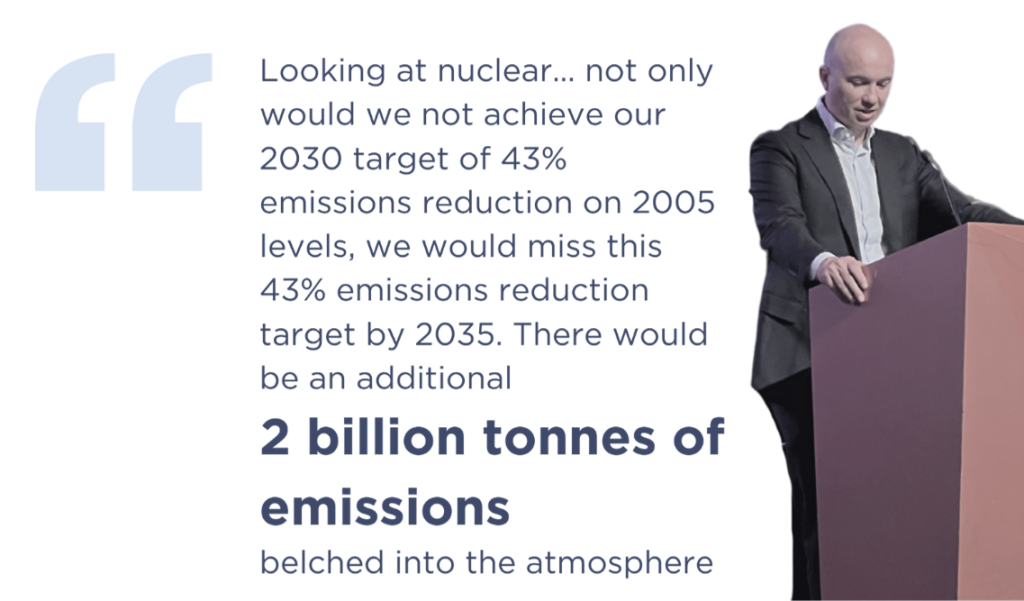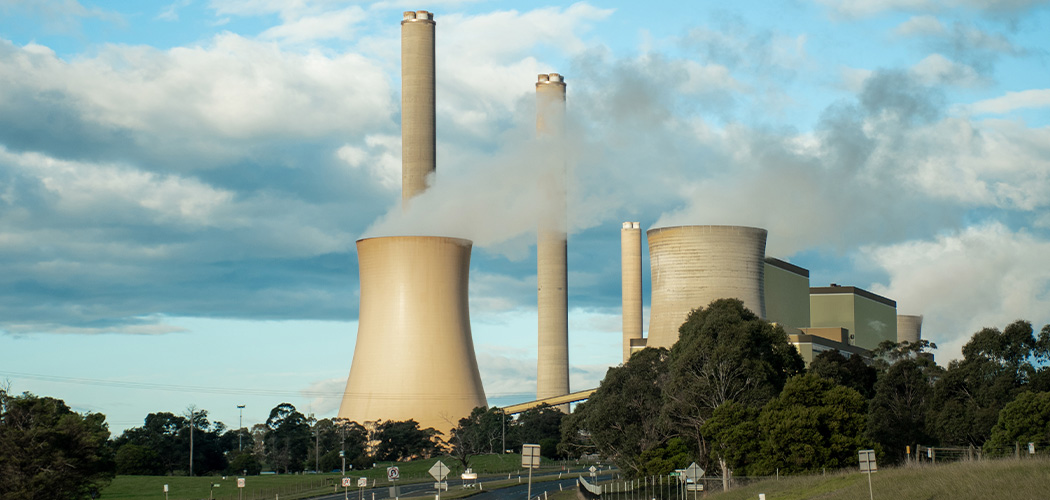The Coalition’s controversial nuclear proposal has taken a backseat in recent weeks, and many Australians are beginning to wonder: what is going on?
Not long ago, the federal Opposition was positioning nuclear energy as its solution for decarbonising Australia’s energy grid. Nuclear was promised to be modern, reliable, and safe. But less than a month from the election, and the Coalition has gone virtually silent on the topic – leaving many Australians, nurses and midwives included, questioning what will happen with their nuclear plans (1).
Nursing and midwifery
As a nurse who cares deeply about the community’s health and social needs, these are the questions I was expecting to have been answered by now:
- What support will be given to health services, and nurses and midwives in the proposed nuclear regions, to ensure they are prepared for nuclear disasters?
- What protections will be put in place to prevent children and unborn babies living in a 30km radius from a nuclear power plant, from its hazardous radiation?
- Why are we proposing to move away from the most cost-effective, quick and clean source of energy (renewables) towards the most expensive, slow and hazardous form of energy production (nuclear)?
- I’ve heard that nuclear power will cause power surges that would require Australian families to turn off their solar panels. How do we avoid them losing money and paying for electricity (from nuclear) they could have got for free (from their solar panels)?
- How will this scheme help Australian communities transition to renewables, when some older mines are scheduled for closure long before nuclear will be ready?
- Who will pay for the high costs of nuclear power in Australia?
- Will the health sector see cuts in order to pay for nuclear?
But many months after they released their policy plan, instead of getting answers, we have been left with more and more questions.
Growing unease
The silence likely reflects growing unease. Public opinion has not been favourable to the nuclear policy. Research suggests that Australians are broadly sceptical, with support particularly low among women and younger voters (2). What’s more telling is that opposition to nuclear is coming not just from environmental groups, but from both sides of the political spectrum.
A prominent group of Liberal-aligned voices—calling themselves Liberals Against Nuclear—have publicly criticised the nuclear plan (3).
Outside the party, a diverse array of critics—from public health advocates to economists and energy experts—have also spoken out. Many warn of safety risks, unresolved waste storage issues, and the eye-watering costs associated with building new reactors in a country with no nuclear infrastructure (5,6).
In a recent event hosted by the Climate Council, Chair of the Climate Change Authority and ex-treasurer of the New South Wales Liberal Perrottet ministry stated:

Modelling of the nuclear policy suggests that, if implemented, they would result in almost two billion tonnes of additional cumulative emissions by 2050 (9). Worse still, if every country followed the Coalition’s model, the planet would be on track for around 2.6°C of warming—a level that scientists warn would trigger irreversible and catastrophic tipping points, more extreme weather and profound impacts on health (9,10).
In short, opposition to nuclear is not just ideological—it is practical, bipartisan, and increasingly mainstream.
Still on the table, but no costing allocated?
Despite the public discomfort, nuclear has not been removed from the Coalition’s policy platform. In his official budget response, Peter Dutton reaffirmed the party’s commitment to exploring nuclear energy (7). Yet, notably, there was no budgetary allocation to match this ambition (8).
So why the radio silence on what is arguably one of the most controversial—and risky—policy proposals introduced to Australia in recent history? The messaging – talking about net zero while opposing proven climate measures—undermines public trust.
The answer may be that nuclear is dividing communities. Nuclear power plants raise legitimate safety and environmental concerns, putting the policy at odds with an increasingly climate-conscious public (2,5). In 2025, Australians are more informed and more vocal about climate change than ever before. They want clean energy that’s affordable, safe, and ready now—not infrastructure that costs hundreds of billions that could take decades to materialise (11).
For many voters—particularly women balancing family, finances, and a genuine concern for their children’s future—a nuclear rollout feels both out of touch and unnecessary. Renewables are already cheaper, faster to deploy, and overwhelmingly popular (12). So why reinvent the wheel? This weekend, the Albanese government announced their $2.3 billion dollar investment into home battery storage. A policy that could see batteries up to 30% cheaper for people living in Australia to purchase, saving thousands on energy generation and storage.
Looking ahead
As the May 3 election draws closer, we need our safety questions addressed. As many of our readers have commented: Who will be on the frontlines of a nuclear disaster? How will nuclear be funded? Where will the waste go? How long will it take? And most importantly—why choose this path over the clean energy technologies that are already delivering results?
If nuclear is truly the way forward, we really need transparent information brought before us.
Until those questions are answered, voters have every reason to be sceptical. Because when it comes to the future of Australia’s energy system, vague promises and vanishing policies simply won’t be enough.
References
- Australian Broadcasting Corporation. Federal Budget 2024: Coalition allocates $0 to nuclear; boosts gas support [Internet]. 2024 May [cited 2025 Apr 2]. Available from: https://abc.net.au
- Essential Research. Public sentiment on nuclear energy in Australia [Internet]. 2024 Mar [cited 2025 Apr 2]. Available from: https://essentialreport.com.au
- The Guardian. Liberal supporters launch election ad campaign against Peter Dutton’s plan to build nuclear power plants [Internet]. 2025 [cited 2025 April 3] Available from https://www.theguardian.com/australia-news/2025/mar/18/liberal-supporters-launch-election-ad-campaign-against-peter-duttons-plan-to-build-nuclear-power-plants
- Climate Council. Nuclear power station risks and delays: Australia can’t wait [Internet]. 2024 [cited 2025 Apr 2]. Available from: https://climatecouncil.org.au
- Australian Conservation Foundation. Nuclear energy is not the answer [Internet]. 2024 [cited 2025 Apr 2]. Available from: https://acf.org.au
- World Nuclear Industry Status Report. Global nuclear energy trends and costs [Internet]. 2023 [cited 2025 Apr 2]. Available from: https://www.worldnuclearreport.org
- Parliament of Australia. Budget reply speech by Hon Peter Dutton MP [Internet]. 2024 May [cited 2025 Apr 2]. Available from: https://aph.gov.au
- The Guardian. Coalition’s budget reply boosts gas while ignoring nuclear [Internet]. 2024 May [cited 2025 Apr 2]. Available from: https://theguardian.com
- Climate Change Authority. Assessing the impact of a nuclear pathway on Australia’s emissions. Canberra: Climate Change Authority; 2025. Report No.: ISBN 978-0-6486349-4-2. Available from: https://www.climatechangeauthority.gov.au/
- Intergovernmental Panel on Climate Change. AR6 Synthesis Report: Climate Change 2023 [Internet]. 2023 [cited 2025 Apr 2]. Available from: https://ipcc.ch
- Grattan Institute. Keeping the lights on: A plan for clean and reliable energy [Internet]. 2023 [cited 2025 Apr 2]. Available from: https://grattan.edu.au
- CSIRO. GenCost 2023–24: Projections of electricity generation costs [Internet]. 2024 Jan [cited 2025 Apr 2]. Available from: https://csiro.au








